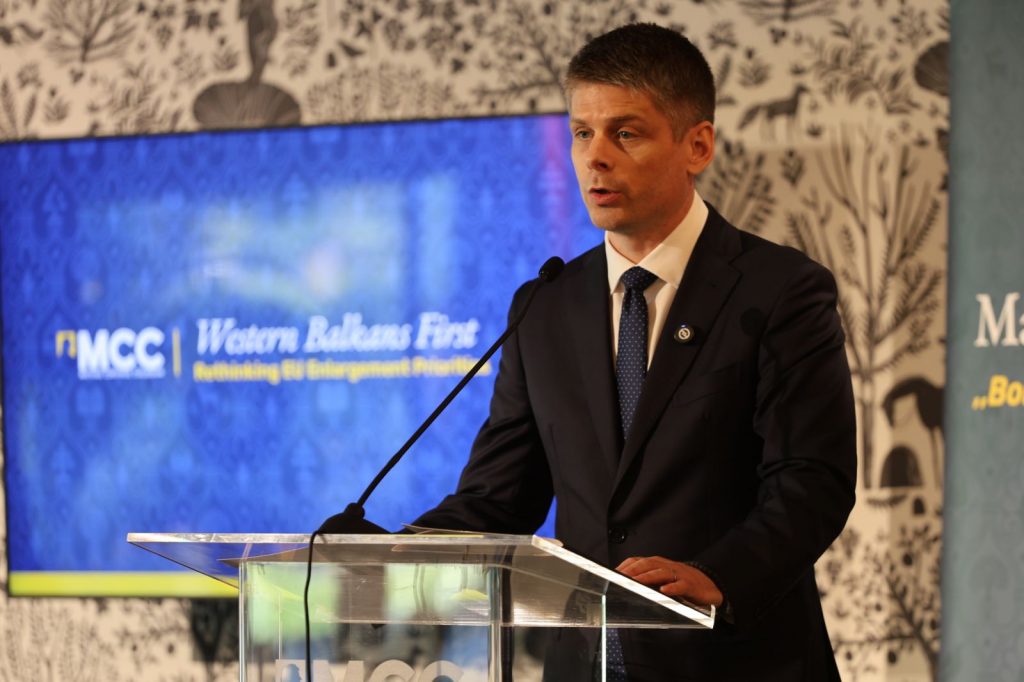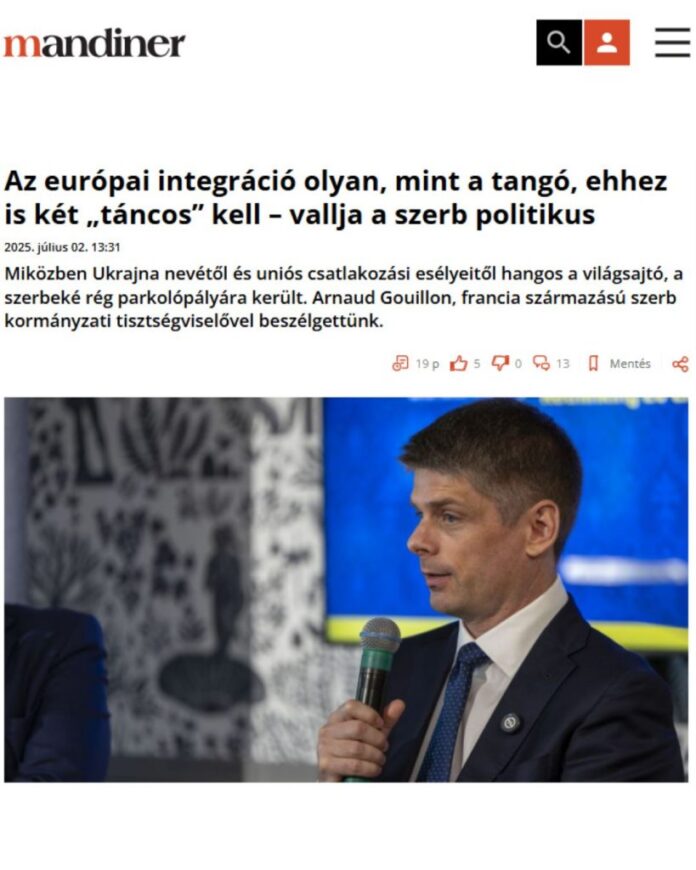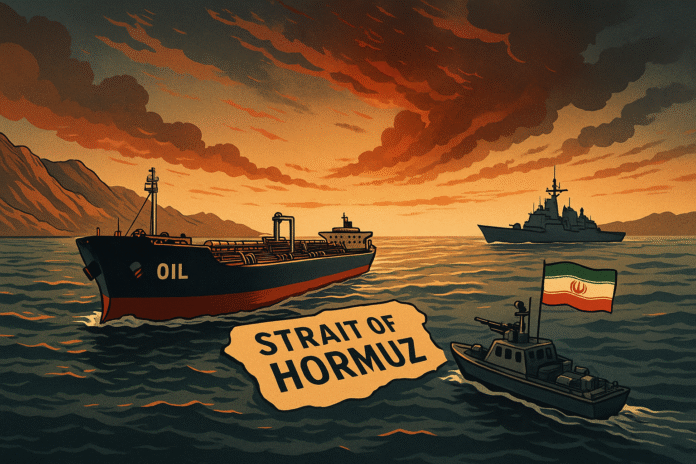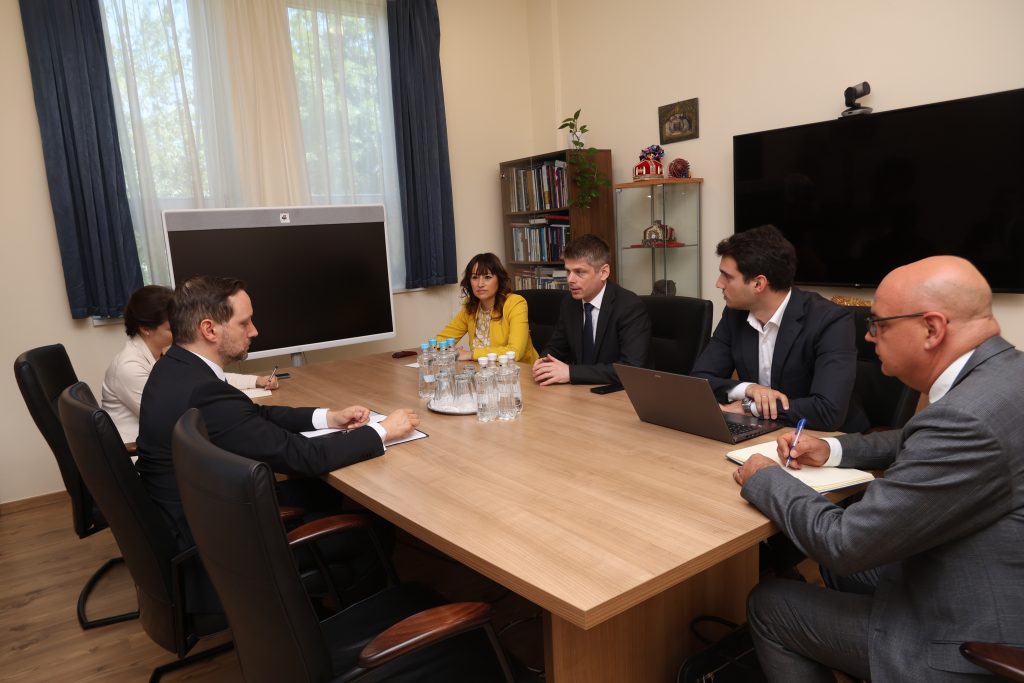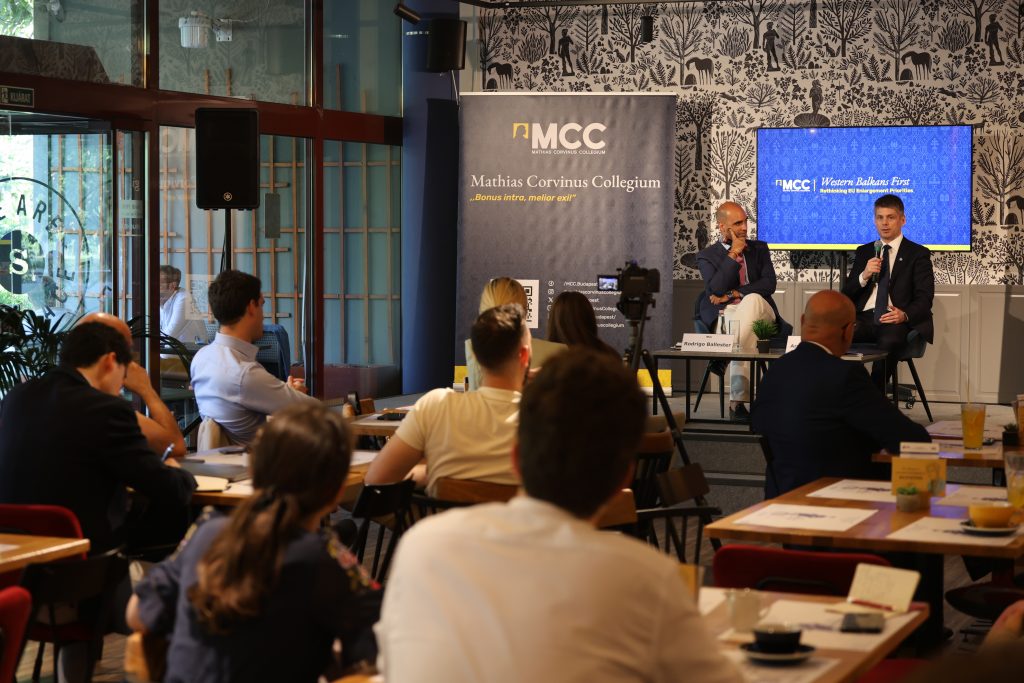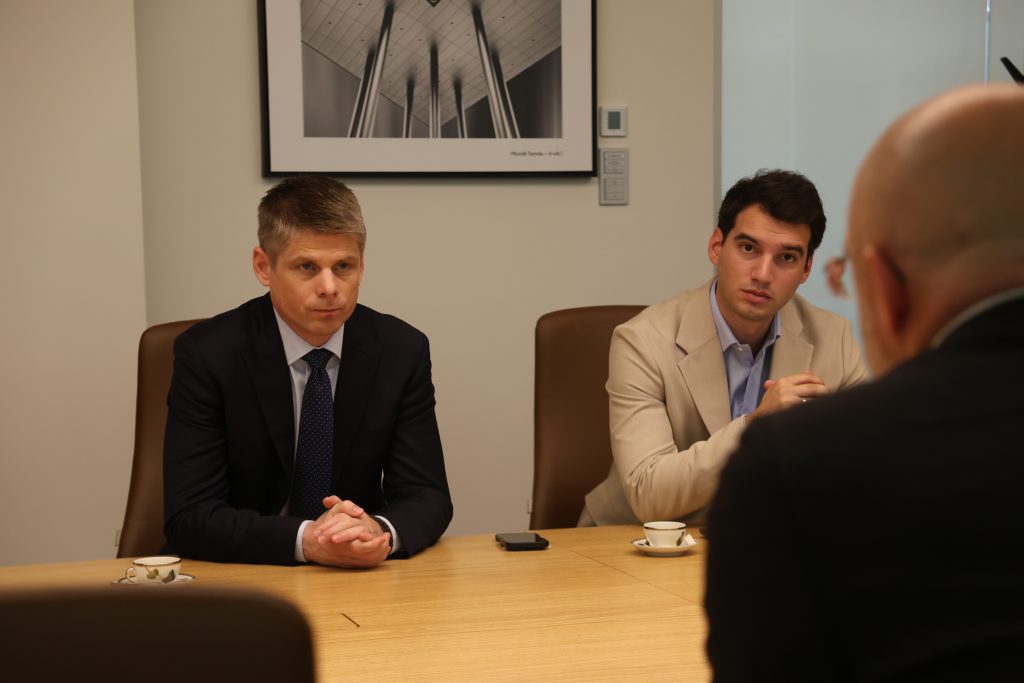Директор Канцеларије за јавну и културну дипломатију Арно Гујон оценио је у интервјуу за утицајни мађарски недељник Мандинер да то што Србија и поред импресивног економског раста и бројних реформи не напредује брже ка чланству у Европској унији јасно показује да пријем у Европску унију није само питање економије, већ и политике и геополитичких интереса.
Гујон је у интервјуу истакао да је Србија остварила значајан економски напредак у последњој деценији. Подсетио је да је БДП Србије између 2020. и 2025. растао просечно четири одсто годишње, што је чак 2,5 пута брже од просека ЕУ, и да по тим економским параметрима парира са државама које имају највећи раст у ЕУ попут Ирске и Пољске.
„Све то јасно показује како улазак Србије у Европску унију није питање економије, већ пре свега политике и геополитике. Цео Западни Балкан, са својих 15 до 18 милиона становника, „кап је у мору“ у поређењу са 450 милиона грађана ЕУ, и не би донео никакву драматичну промену ни демографски, ни политички, ни економски када би нас све одједном примили“, нагласио је Гујон, додавши да је „Србија данас економски и реформски на далеко вишем нивоу и много спремнија него што су то биле Бугарска или Румунија када су постале чланице Европске уније“.
Управо зато, наводи Гујон, политичка питања, попут односа Београда и Приштине, често коче процес проширења. Он је подсетио да је Приштина више пута одбила да преговара са српском владом и да није испунила обавезе из 2013. о формирању Заједнице српских општина.
„Иако испуњавање поглавља 35 не зависи само од нас, него и од Приштине, забрињава што се неке европске државе гласно позивају на међународно право и суверенитет, али то очигледно не важи када је реч о Србији и њеној покрајини Косову и Метохији“, рекао је Гујон.
Поводом чињенице да је Европска унија отворила са Србијом посебно поглавље 35, које се тиче Косова и Метохије, и да од решавања тог питања зависи цео процес приступања, Гујон је поручио: „ЕУ не може да тражи од нас да признамо независно Косово, када ни пет њених чланица Шпанија, Словачка, Румунија, Грчка и Кипар о томе не желе ни да разговарају.“
У интервјуу за Мандинер Гујон је указао и на то да процес приступања повремено износи на површину неспоразуме, па је зато посебно важно што Србија тесно сарађује са Мађарском, јер „ова земља и овај народ разумеју Србију“.
На сугестију новинара Мандинера да би управо блиски односи Србије и Мађарске могли бити прећутна политичка препрека српској интеграцији, јер Брисел не жели да Орбанова политика добије још једног савезника, Гујон је одговорио да када би то било тачно, онда би то било кратковидо.
„Идеологије долазе и одлазе, за 50 година о свету ћемо мислити потпуно другачије него сада. Али националне државе и културе остају с нама, и ако их ујединимо у савез, само можемо бити јачи. То је била визија Европе Шарла де Гола, а не неког чудног, лево-либералног клуба,“ закључио је Гујон.
